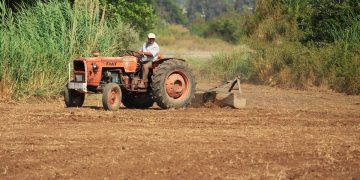The general approach reached by the Council today aims to make soil health monitoring obligatory, provides guiding principles for sustainable soil management and addresses situations where soil contamination poses unacceptable health and environment risks.
Healthy soils are the foundation for 95% of the food we eat, host more than 25% of the biodiversity in the world and are the largest terrestrial carbon pool on the planet. Yet, soil is a limited resource and over 60 % of soils in the EU are not in a good condition.
Humans and our ecosystems depend on soil as a source of food, clean water, and habitat. But it is a non-renewable resource which needs to be protected and restored. Today, we are taking an important step towards healthy soils in the EU by 2050.
Alain Maron, minister of the Government of the Brussels-Capital Region, responsible for climate change, environment, energy and participatory democracy
Comprehensive monitoring framework
Member states, supported by the Commission, will first monitor and then assess the health of all soils in their territory, so that sustainable soil management practices and other appropriate measures can be taken by authorities and landowners across the EU. Member states will determine sampling points for monitoring, on the basis of an EU common methodology.
The general approach includes additional flexibilities to member states regarding soil measurements, including the possibility to use existing data and monitoring systems. It also sets out the minimum quality requirements for laboratories analysing soil samples to ensure the comparability of soil measurements.
Assessment of soil health
The general approach shares the Commission proposal’s ambition on assessment of soil health, maintaining the concept of soil descriptors (physical, chemical and biological parameters). In order to adapt to local circumstances, a more flexible double-value system was agreed in the Council to assess soil health:
- non-binding sustainable target values at EU level to reflect the long-term objectives
- operational trigger values, set at member states level for each soil descriptor, in order to prioritise and gradually implement measures leading to a healthy soil status
Sustainable soil management
According to the general approach, member states will define practices on sustainable soil management within five years of the directive entering into force, taking into account the guiding sustainable soil management principles set out in the directive.
Land take mitigation
While maintaining the aspirational long-term objective to have no net land take by 2050, the general approach is centred on tackling soil sealing and soil destruction, as the most visible, the most impactful and the easiest to monitor aspects of land take.
It sets out mitigation principles to be taken into account in member states’ land use planning, which are sufficiently flexible to respect member states’ spatial planning decisions, including on housing and energy transition measures.
Contaminated sites
According to the proposed directive, member states will identify all potentially contaminated sites, then map them in a public register.
The general approach introduces a risk-based and stepwise approach. This will allow member states to prioritise measures, taking into account the potential risks, socio-economic context and the current and planned land use. To help identify potentially contaminated sites, ministers agreed on establishing national lists of potentially contaminating activities.
Once a contaminated site has been identified, it will be investigated, and any unacceptable risks for human health and the environment will be addressed.
Next steps
The general approach reached by the Council will allow its rotating presidency to start talks with the European Parliament on the final shape of the text. Negotiations are expected to start under the new legislative cycle.
Background
According to the EU soil strategy, presented by the Commission in 2021, the lack of a dedicated EU legislation was singled out as a major cause for the alarming state of EU soils. To ensure the same level of protection to soil that exists for water, the marine environment and air in the EU, the Commission put forward the soil monitoring directive on 5 July 2023.
The ultimate aspirational objective of the proposed directive is to have all soils in a healthy condition by 2050, in line with the EU Zero Pollution ambition. The proposed directive also contributes to the achievement of the UN 2030 agenda for sustainable development.
O artigo foi publicado originalmente em Conselho Europeu.





















































